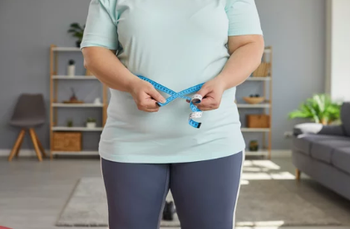
Elevated lifetime estrogen exposure could increase stroke risk in women
An analysis of data from the China Kadoorie Biobank study suggests cumulative exposure to estrogen was associated with stroke risk in postmenopausal women.
Greater cumulative exposure to estrogen throughout a woman’s life could increase her risk of stroke, according to the results of a recent study.1
An analysis of endogenous estrogen exposure and total estrogen exposure among a cohort of postmenopausal females without prior stroke, results of the study indicate women with a lower level of estrogen exposure had a decreased risk of ischemic stroke and intracerebral hemorrhage than their counterparts with the highest levels of estrogen exposure.
“Our study suggests that higher estrogen levels due to a number of reproductive factors, including a longer reproductive life span and using hormone therapy or contraceptives, are linked to a lower risk of ischemic stroke and intracerebral hemorrhage,” said study investigator Peige Song, PhD, of the Zhejiang University School of Medicine in Hangzhou, China.2 “These findings might help with new ideas for stroke prevention, such as considering screenings for people who have a short lifetime exposure to estrogen.”
Despite mountains of previous research describing associations between multiple reproductive factors and risk of stroke, including a recent study from Denmark3, Song and team launched the current research endeavor citing a lack of research into the cumulative effects of reproductive factors during a reproductive life course on stroke and stroke subtypes. With this in mind, investigators designed their study as an analysis of data from the China Kadoorie Biobank study, which is an open-ended study that enrolled more than 500,000 adults across China.4
From the study, which enrolled individuals from 2004-2008, investigators identified 122,939 postmenopausal women without prior stroke at baseline for inclusion in their analyses. This cohort had a median age at menarche of 16.0 (interquartile range [IQR], 14.0-17.0) years, a median age at menopause of 49 (IQR, 47.0-51.0) years, and median age at baseline of 58.3 (IQR, 54.0-65.1).
For the purpose of analysis, lifetime cumulative estrogen exposure due to reproductive factors was assessed using reproductive lifespan, endogenous estrogen exposure, and total estrogen exposure. The primary outcome of interest for the study was incidence of stroke, with stroke subtypes serving as secondary outcomes of interest. Investigators pointed out multivariable-adjusted Cox proportional hazards regression models were applied to estimate the adjusted hazard ratio (aHR) for risk of stroke by quartiles of reproductive lifespan, endogenous estrogen exposure, and total estrogen exposure.
Results of the investigators’ analyses, which included a median follow-up period of 8.9 years, indicated a total of 15,139 new-onset stroke cases occurred within the follow-up, with 12,853 cases of ischemic stroke, 2,580 cases of intracerebral hemorrhage, and 269 cases of subarachnoid hemorrhage. Comparison of risk among different quartiles of estrogen exposure indicated those in the lowest quartile of reproductive lifespan had a lower risk of total stroke (aHR, 0.95 [95% CI, 0.92-0.98]), ischemic stroke (aHR, 0.95 [95% CI, 0.92-0.98]), and intracerebral hemorrhage (aHR, 0.87 [95% CI, 0.81-0.94]) compared to those in the highest quartile.
Further analysis indicated graded associations were observed for both endogenous estrogen exposure and total estrogen exposure with total stroke (EEE: aHR 0.85 [95% CI, 0.82-0.89]; TEE: aHR, 0.87 [95% CI, 0.84-0.90]), ischemic stroke (EEE: aHR, 0.86 [95% CI, 0.83-0.90]; TEE: aHR, 0.86 [95% CI, 0.83-0.89]), and intracerebral hemorrhage (EEE: aHR, 0.73 [95% CI, 0.65-0.81]; TEE: aHR, 0.83 [95% CI, 0.76-0.91]) (P for all <.001).
“Estrogen exposure throughout life could potentially be a useful indicator of a person’s risk of different types of stroke following menopause,” Song added.1 “However, more research is needed on the biological, behavioral, and social factors that may contribute to the link between estrogen exposure and stroke risk across a woman’s lifespan.”
This article was originally published by our sister publication HCP Live.
References
- Hou L, Li S, Zhu S, et al. Lifetime cumulative effect of reproductive factors on stroke and its subtypes in postmenopausal Chinese: A prospective cohort study. Neurology.
https://n.neurology.org/content/early/2023/02/01/WNL.0000000000206863 . Published February 1, 2023. Accessed February 2, 2023. - Does Lifetime Exposure to Estrogen Affect Risk of Stroke? Does lifetime exposure to estrogen affect risk of stroke?
https://www.aan.com/PressRoom/Home/PressRelease/5044 . Published February 1, 2023. Accessed February 2, 2023. - Campbell P. Preeclampsia increases heart attack, stroke risk for up to 20 years after pregnancy. HCP Live.
https://www.hcplive.com/view/preeclampsia-increases-heart-attack-stroke-risk-for-up-to-20-years-after-pregnancy . Published January 27, 2023. Accessed February 2, 2023. - Study design. China Kadoorie Biobank (CKB).
https://www.ckbiobank.org/study-resources/study-design . Accessed February 2, 2023.
Newsletter
Get the latest clinical updates, case studies, and expert commentary in obstetric and gynecologic care. Sign up now to stay informed.










